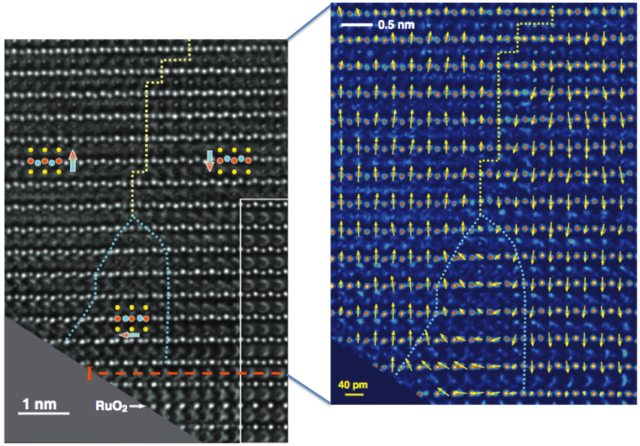

Members
| Chunlin Jia | Permanent scientific staff |
| Lei Jin | Permanent scientific staff |
| Hongchu Du | Scientific staff |
| Jiecai Fu | Visiting Scientist |
| Zheng Ma | PhD student |
| Zonghua Wan | Ms. student |
| Demetra Petrou | Visiting student |
Research
Thin films of ceramic oxides have become increasingly important for electronics applications of recently. In particular, dielectric, ferroelectric and ferromagnetic thin films have been the most important materials for modern electronic devices. However, the electrical and/or magnetic properties of the thin films in most cases show a deviation from those expected for their bulk counterparts. This deviation is believed to relate to the special microstructure, local chemistry and defect configurations of the films. A fundamental understanding of the dependence of the microstructure on the film processing conditions and the relations between the microstructure and the properties is critical for the successful applications of the oxide thin films in the fabrication of the devices. The film structure and film physics is the main interests of our research.
The atomic structure of interfaces, domain walls and other lattice defects in oxides can be investigated by means of high-resolution (scanning) transmission electron microscopy (HR(S)TEM). The recently developed technique of the hardware correction of the aberrations of the objective lens allows one to extend the point resolution of a microscope with field emission gun up to its information limit. Moreover, a negative-CS-imaging (NCSI) technique has recently been developed by our group in collaboration with the hrtem methods work party using such a hardware corrector. With this novel imaging technique it is possible to image chemical elements with low nuclear charge such as oxygen with a comparatively higher contrast, which is especially useful for studying various oxide materials.
In order to fully understand the defects, we do not only explore the structural details but also the chemical information, e.g. chemical deviation from stoichiomitry, impurity segregation and the chemical bonding state of the atoms at lattice defects, interfaces and grain boundaries. Access to these details can be provided by combination of HR(S)TEM with electron spectroscopy.